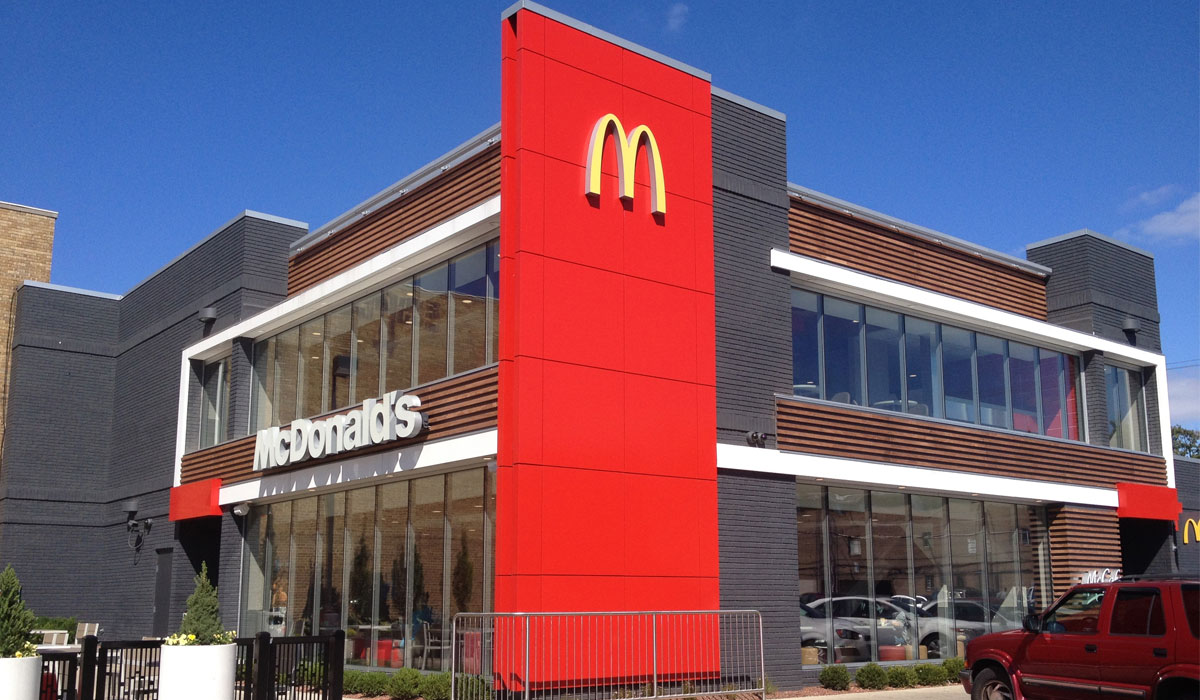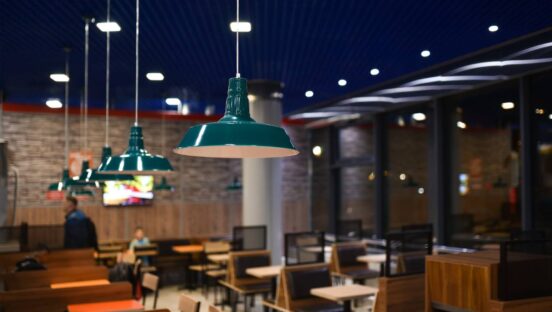As much as labor dynamics have flared of late, the national hourly crew turnover rate for limited-service restaurants today sits well above the 100 percent mark—a number virtually unchanged from 2019, according to Black Box Intelligence.
It’s a reality surfacing some age-old topics for operators.
To set the current scene, Black Box’s June data confirmed sector sales have recovered to pre-pandemic levels, with chains posting their fourth consecutive month of same-store comps growth. Thanks to “unusually high check” figures and heftier digital take, many brands are performing above 2019 levels. Just look at Texas Roadhouse, which posted comps more than 20 percent above 2019 levels in Q2.
In the week ending July 18, the industry notched its 18th straight week of growth, and average-same-store sales over the past five periods were nearly double the figure recorded the prior five-week stretch.
Recent OpenTable data also showed reservations returned to normal after plunging two-thirds during the pandemic. Restaurant receipts topped $70 billion in June for the first time ever, per Census Bureau statistics. They were 6.5 percent higher compared to February 2020.
And by Yelp data, more than 22,000 restaurants or food-related businesses reopened in the Q2, while roughly 20,000 new restaurants hit the market.
Yet, just like pre-COVID, guest counts are one metric that’s not growing. They reached their worst level in mid-July of the last four weeks. Average check is covering the gap just as it was before the crisis, but at an even more accelerated rate. Check is growing faster than 2019 and 2020, Black Box said. Considering rising commodity prices and labor costs, it’s unlikely that trend reverses.
And the hallmarks separating winning from struggling brands strikes familiar, too. Coming into June, online guest sentiment regarding “food” was increasingly positive compared to 2019, Black Box said. From February, 50-plus percent of online posts classified as positive.
“Food” witnessed an 8.5 percent increase (two-year growth trend) rolling three months. Service 5.6 percent.
In June, however, Black Box noticed an erosion in positive sentiment for food, as well as service.
Is this an early warning shot of things to come? Has understaffing started to create friction when it comes to execution?
There was considerable distance between restaurants performing at the top and median companies in Black Box’s data. Top performers achieved same-store sales growth 16 percentage points above the figures posted by the median full-service performer.
What separated brands was “service”—the attribute facing the biggest gap from the top to the middle. “Ambiance” was second, something Black Box credits to a renewed importance on cleanliness in a COVID era.
But this isn’t anything new. Pre-virus, “ambiance” and “service” were still the two attributes carrying winning concepts forward. “Guests seem to be placing their focus on the aspects of the restaurant experience they cared about the most before the pandemic; another sign of the industry returning to a more stable environment,” Black Box said.
So similar to the days before COVID detonated trends, the restaurants delivering the best experience are generating the most repeat business in today’s recovery stretch. And that often boils down to employee recruitment and retention. Only the task has never been harder.
Before the pandemic, 11.1 million people worked at restaurants. Even with jobs flooding back, the industry is down 10 percent, or about 1.1 million versus prior levels. COVID put more than 5 million restaurant employees out of a job.
Roughly 75 million U.S. workers, or 48 percent of the labor pool, are paid an hourly rate. McKinsey & Company estimates replacing an employee can cost 20–30 percent of an annual salary, on average. By contrast, retaining a worker costs less than 10 percent of annual pay. Not to mention the less-tangible effects of a short-staffed restaurant, from hiring challenges to costly OT, burnout, and, as Black Box spotlighted, a setback in customer service.
The COVID landscape is forcing restaurants to adopt new ways to attract and retain employees. So are millennials and Gen Zers, and what matters to this surging swath of workers, which now make up 60 percent of the country’s hourly workforce.
These generations grew up with digital accessibility and expect modern communication tools, gig-like flexibility, and the ability to complete transactions quickly and easily from their mobile devices, said Legion, an AI-powered workforce management platform.
“But as hourly employees, they often lack schedule flexibility and mobile technology,” the company said. “Attracting and retaining these employees requires investments in digital transformation and workforce technologies.”
Legion commissioned a study of thousands of hourly workers and their managers in North America. With the goal being to better understand workplace concerns and how restaurants can attract and retain the employees they need at this stage in the comeback journey.
[image source_ID=”130340″]
Key points to follow
More than 83 percent of employees and their managers in Legion’s study reported feeling just as stressed in 2021 as they did in 2020 during the height of COVID. These stress levels can result in increased levels of attrition. It’s leading to a pretty natural reset of expectations, especially when you toss in expanded unemployment benefits and the sheer growth of opportunities in the job market. As recent One Fair Wage data showed, UI and its $300 benefit was as effective at inspiring hourly employees to seek higher-paying jobs as it was in encouraging them to not work.
To attract and retain hourly employees, Legion said, restaurants should empower them by giving them more input into their schedules, better communication tools, and schedule flexibility. BTIG analyst Peter Saleh hinted at this earlier in the year when he predicted restaurants might need to invest in larger rosters of employees working shorter shifts until things balance out. It’s going to drive training costs up, and likely menu prices.
What are the top reasons hourly employees quit a job—other than pay?
- Lack of schedule empowerment: 59 percent
- Poor communication with my employer: 39 percent
- Can’t get paid early: 2 percent
“Employees feel it’s critical to have schedule flexibility, including when and where they work, so they can meet personal obligations,” Legion said.
Everything from childcare to health concerns has put flexibility on the front-burner for restaurant recruiters. Zaxby’s chief digital and technology officer Mike Nettles said at BTIG’s technology forum that employers need to provide more of a gig-type job than a traditional quick-service position these days. Restaurants also need to move rapidly through the hiring process.
Past earning a living wage, employers are offering the ability to pick up shifts, swap shifts, and give schedule input to workers. Employees also want the ability to get paid early if they have an emergency. All while having access to modern communication tools to easily communicate and check schedules.
According to Legion’s study, the second reason an employee would quit was “poor communication with their managers.”
Recruiting today is not as simple as putting a “now hiring” sign in the window and waiting for applications to flood in. “These days, technology plays a major role in our daily lives, and it is no different in the recruiting process,” Laura Scavone, VP of human resources at Smoothie King told QSR. “Functions like text-to-apply or inserting AI functionality into the recruitment process ease the burden on hiring managers while appealing to the evolved desires of a candidate.”
And speaking of the speed note, Scavone added candidates are likely applying to multiple jobs at a time. “The first one to respond is often the first to win,” she said.
“With so much competition out there, you need to market to your candidates like you do your guests,” Scavone said. “This means getting your job postings in front of the right audience at the right time. Platforms like Indeed.com and Snagajob.com seem to be a hub for food and beverage candidates looking for jobs. Utilizing the ‘boost; feature brings your posting to the top on a candidate’s job search page. Additionally, don’t forget to utilize some of the free recruiting tools embedded within these programs as well. For example, Indeed offers a virtual recruiter tool that will invite candidates to apply for your positions and that offers free video interviewing, allowing you to connect with candidates faster.”
Don’t forget about managers
The staffing shortage has only complicated matters for GMs and other in-store leaders. They have to scramble to cover shifts, while also adapting and guiding employees through evolving channels of customer engagement, from the drive-thru, curbside, delivery, and more.
As Legion pointed out, outdated and manual processes only compound issues. If it was a problem having managers spend too much time on administrative tasks pre-COVID, it’s only heightened given the cross-functional realities of what it takes to run a restaurant today, with off-premises channels surging.
What do managers value beyond a pay raise?
- Provide tools that make it easier to communicate with my team: 42 percent
- Reduce time spent on administrative tasks like schedule: 36 percent
- The ability to get paid early: 15 percent
This is a growth area for a lot of businesses.
How are schedules created
- Google Docs or similar software: 43 percent
- Paper-based process: 26 percent
- Scheduling software that enables schedule writing: 21 percent
- Scheduling software that auto-generates schedules: 10 percent
Thirty-five percent of managers in Legion’s study using manual processes reported spending 3–10 hours (or more) a week creating schedules, managing schedule changes, and on employee attendance.
There are a lot of hours at stake to divert to guiding employees (often new due to high turnover) or to spend on guest-facing activities themselves.
What is the hardest part of creating schedules?
- Matching employee preferences and availability with business needs: 45 percent
- Staying within the labor budget: 19 percent
- Creating fair equitable schedules: 13 percent
- Ensuring compliance with labor laws and company policies: 8 percent
- Other: 8 percent
- Cumbersome processes and tools: 7 percent
If you view all this from a circular angle, managers are facing a challenge that’s also critical to hourly employees—this notion of incorporating preferences and availability into the schedule. Essentially, managing a staff of flexible workers.
People are going to swap shifts. Or not show up for them. Or simply want the ability to dictate hours as life bounces back to normal.
What takes the most time and effort when creating schedules?
- Managing call-outs and no-shows: 35 percent
- Approving employee-initiated shift swaps and schedule changes: 29 percent
- Approving employee punches and timesheets: 18 percent
- Approving time-off requests: 12 percent
- Other: 6 percent
Part of the reason call-outs and no-shows rise to the top, Legion said, is due to the fact employees are communicating schedule changes manually through emails, calls, and texts.
Almost three-quarters (73 percent) of employees said they call or text managers to notify them about unexpected schedule changes.
How are open shifts filled after the schedule has been published?
- Call or text employees that I think will take the shift: 54 percent
- Email employees that I think will take the shift: 21 percent
- Other: 11 percent
- Post the open shift on a mobile app and see if anyone wants it: 9 percent
- Rely on mobile app to suggest the right people for shifts: 4 percent
Employees told Legion a key trigger in overall satisfaction is the ability to swap shifts or pick up additional ones when needed. These employees are often working multiple jobs, doing gig work, or balancing home or school responsibilities.
Seventy-five percent of managers reported filling open shifts by calling or email employees they think will be interested in picking up the vacated block.
“That’s not only inefficient, it potentially opens managers up to compliance issues, increased labor costs, and perceived favoritism as well,” Legion said. “Managers could actually be contributing to attrition by always giving shifts to favorite employees or not sharing the opportunity with all employees. They could also give shifts to employees that create an overtime situation versus employees that would not require overtime. What appears on the surface to be just inefficiency could be very costly to the business.”
At the heart of this concern is the elementary building blocks. Restaurants that deliver experience beat those that don’t. And ensuring employees are happy and well-trained is generally the best way to get there.
Legion said it’s troubling to see 76 percent of managers claim they don’t have time to focus on these areas because they are bogged down with administrative tasks.
How would extra time be spent with reduced time on administrative tasks?
- Coaching and developing my team: 49 percent
- Interacting with customers: 27 percent
- I’d get my time off back: 20 percent
- Other: 3 percent
Actions to take
Legion offered three steps for restaurants to get ahead of these issues.
1. Extend Digital Transformation Efforts to Front-line Employees
According to McKinsey, digital transformation efforts have sped up by 3–4 years due to COVID. That’s a widely held belief in quick service.
But the less-publicized point is that digital gains shouldn’t be reserved for customers. Employees and managers of all levels want the same type of modern tools, Legion says.
“Extending digital transformation efforts to the workforce and delivering greater employee value through workforce management technology is a great place to start,” Legion said. “For example, swapping a shift easily, picking up an open one, or checking a schedule gives employees more control.”
2. Improve Communications
Based on Legion’s survey findings, 82 percent of managers and employees are likely or very likely to work for a business that provides benefits such as better communications and schedule empowerment.
Mobile technologies have raised expectations for things such as immediate feedback, information, training, and communications.
3. Provide More Automation to Create Efficiencies, Flexibility, and Autonomy
One theme threaded throughout the survey—manual processes are time-consuming, detract from a manager’s ability to coach and spend time on guest-facing activities, and often lead to perceived favoritism or disengaged employees. In turn, it can expose restaurants to compliance risk.
“From a day-to-day perspective, automation is critical to operational efficiency and retaining managers and employees,” Legion said.













